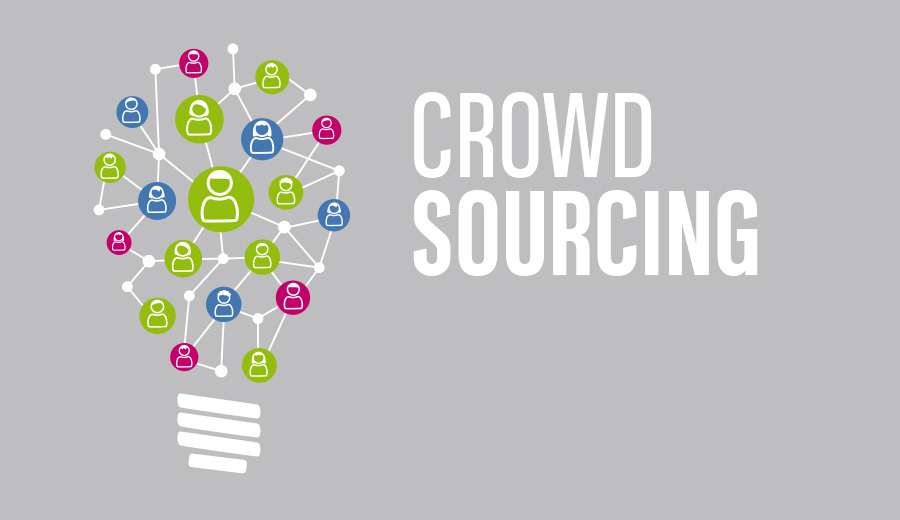Currently, crowdsourcing is described as the practice of obtaining needed services, ideas, or content by soliciting contributions from a large group of people, especially from the online community, rather than from traditional employees or suppliers. The concept of crowdsourcing, on the other hand, is not new and predates the internet. In this article, we look at the benefits and drawbacks of crowdsourcing in the context of intellectual property.
What are the benefits of crowdsourcing?
By harnessing ideas that would not have been realized otherwise, crowdsourcing has the ability to open up new ideas and opportunities. In theory, crowdsourcing may help with outcomes by encouraging creative thinking and expanding the number of ideas working on a certain topic or task.
Crowdsourcing and intellectual property
In both technical and non-technical sectors, crowdsourcing strategies are applied.
For logos, brand names, graphics, product designs, software solutions, and problem-solving tasks, there are a variety of online crowdsourcing platforms. Crowdsourcing platforms are being used by multinational corporations to find new breakthroughs in technical disciplines such as medicines, clean technology, and engineering, to name a few.
Intellectual property rights provide for the protection of significant ideas and creations, as well as the realization of value through exclusive rights with a specified scope and duration. Intellectual property rights are a barrier and a danger to new market entrants when they are in the control of third parties. As a result, it’s critical to think about:
- Patent law – when solutions to technical problems are sought via crowdsourcing
- Trademark law – when crowdsourcing is used to come up with new product names, logos, or brands
- Design law – with respect to the visual appearance of new and distinctive products
- Copyright law – with respect to artistic works such as drawings and literary works (any original text)
When crowdsourcing ideas, it’s important to keep track of intellectual property. Crowdsourcing may generate questions about who owns the intellectual property created as a consequence of the process. Ownership of rights to crowdsourced intellectual property will be unaffected by the regular regulations governing employment contracts — unless, of course, a corporation conducts an internal crowdsourcing exercise in which only its own workers participate.
Express and unambiguous contractual terms dealing with intellectual property ownership, license, and usage (such as in terms and conditions that contributors are obliged to actively acknowledge) are therefore crucial, just as they would be when employing any third-party contractor/consultant. Payment for a successful solution can be provided in exchange for a transfer of all related intellectual property rights by agreement. A deed, which does not involve any consideration but does have additional conditions, is an alternate mechanism for the formal legal transfer of the applicable intellectual property rights.
Novelty and inventive steps are required for patent protection. As a result, it is recommended to refrain from disclosing too many (or, preferably, any) details of an invention until a patent application has been submitted (e.g. on a website). If too much information is revealed, an invention may eventually be considered ineligible for patent protection. This is critical, especially because several significant jurisdictions do not provide for a grace period.
It’s also crucial to be aware of any potential secret use difficulties involved with commercializing an innovation before filing a patent application. If the innovation is economically used before the initial patent application is submitted, the later-filed patent may be invalidated.
Furthermore, keep in mind that any information shared in a crowdsourcing context is available to competitors.
Due diligence checks are still required for a crowdsourced solution. A granted patent, for example, gives the holder the exclusive right to exploit the claimed invention (including, but not limited to, importing, using, creating, selling, or offering to sell a patented product or using a patented process), as well as the right to prevent others from doing so (via court proceedings). However, because the patent does not grant the owner the right to exploit the invention without infringing on others’ intellectual property rights or obtaining any necessary regulatory approvals, it is recommended that relevant investigations be conducted to determine whether exploiting the invention would infringe on someone else’s patent (“Freedom to Operate”).
Due diligence investigations are required to determine whether the proposed name or trademark, design, appearance, or connected literary or creative work infringes on others’ intellectual property rights.

